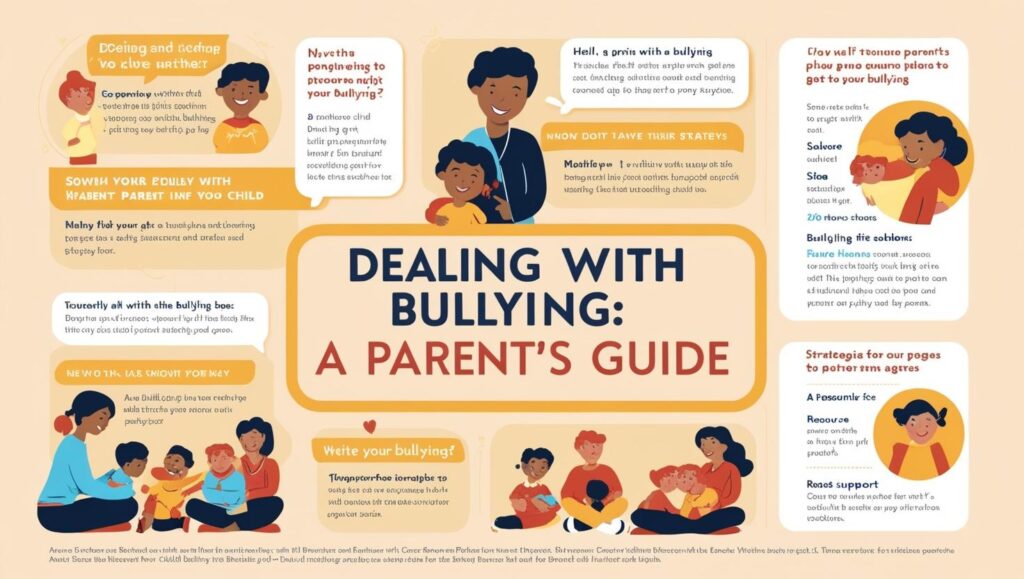
Bullying is unfortunately a common experience for many children and teens. As a parent, it can be heartbreaking and frustrating to learn that your child is being bullied. However, there are several effective strategies you can use to help your child cope with and overcome bullying. This guide will provide an overview of how to support your child if they are facing bullying.
Recognizing the Signs of Bullying
The first step is learning to recognise if your child is actually being bullied. Some common signs include:
- Withdrawing from friends and activities
- Appearing more anxious or depressed
- Unexplained injuries
- Lost or damaged belongings
- Avoiding school or sudden drop in grades
If you notice any behaviours that seem out of the ordinary for your child, don’t ignore them. Gently ask your child if everything is okay and if anyone is bothering them. Make sure they feel comfortable opening up to you.
Having Open Conversations
Once you have established that your child is facing bullying, have honest conversations to learn more details. Ask them to describe the nature of the bullying. Is it physical, verbal or online? Is it being done by one person or a group? When and where is the bullying happening? The more details you can obtain, the better equipped you’ll be to intervene appropriately.
Emphasise to your child that bullying is unacceptable and not their fault. Give them space to express their feelings and reassure them that you will find a solution together. Whether you are fostering a child with Clifford House Fostering or raising your biological child, providing a judgement-free atmosphere is key.
Finding Solutions at School
Schedule a meeting to alert your child’s teacher or headteacher about the bullying. Give them the details your child has provided and ask them to increase supervision in problem areas. Request that they speak to the bully or bullies about their behavior.
If the bullying persists, follow up with additional meetings or phone calls. Clarify what steps the school plans to take per their anti-bullying policy. Be politely persistent until the school takes satisfactory action. Switching classes or reporting the behaviour to the police may be necessary in severe cases.
Building Your Child’s Confidence
While you navigate the bullying situation, also focus on supporting your child at home. Spend quality time together and remind them of their positive qualities. Teach them how to calmly stand up to bullying behaviour. With your help, they can learn assertiveness skills and techniques to boost their self-esteem.
Encourage your child to pursue interests and hobbies they enjoy. Sign them up for sports teams, art classes or volunteer work where they can make new friends in a safe environment. Having interests outside of school helps reduce the dominance of bullying situations.
Getting Additional Help
Seeking counselling can be beneficial for both your child and your family. A therapist can give your child tools to manage stress and anxiety related to bullying. Make sure your child has a support system of people they can turn to, including other trusted relatives or a school counsellor.
You may also wish to contact an anti-bullying organisation for more guidance, resources and support. Remember, you and your child do not have to face bullying alone.
No parent wants to see their child bullied, but numerous measures can be taken to stop bullying behaviour. The key is identifying bullying early and then addressing it comprehensively at school and home. With your unfailing love and support, your child can overcome this challenge and thrive!
When Your Child Is the Bully
Discovering that your child is the one engaging in bullying behavior can be shocking and difficult to accept. However, acknowledging the issue and addressing it with care is crucial to helping your child develop empathy, accountability, and healthier social interactions.
First, have an open and honest conversation with your child about their behavior. Avoid accusations and instead ask them why they acted the way they did. Sometimes, children bully due to peer pressure, insecurity, or unresolved emotional struggles. Understanding the root cause will help guide your response.
Make it clear that bullying is unacceptable and discuss the impact their actions may have on others. Encourage your child to reflect on how they would feel if they were in the victim’s position. Teaching empathy is key to stopping harmful behavior.
Work with the school to create a plan for addressing the situation. This may include setting clear consequences for bullying, encouraging positive social behavior, and possibly involving a school counselor to help your child navigate their emotions in a constructive way.
At home, reinforce kindness and respect by modeling healthy communication and conflict resolution. Encourage your child to make amends—whether through a sincere apology or by demonstrating changed behavior over time. Supporting them through this learning process will help them grow into a more compassionate and responsible individual.
Conclusion
Bullying is a serious issue that affects children in many ways, whether they are the target or the instigator. As a parent, your role is to recognize the signs, foster open conversations, and take proactive steps to address the situation—whether advocating for your child at school or helping them take responsibility for their own actions. By promoting empathy, confidence, and accountability, you can help your child navigate these challenges in a healthy way. Every child has the potential to learn and grow, and with your support, they can develop the emotional intelligence and resilience needed to build positive relationships and contribute to a kinder, more inclusive world.


